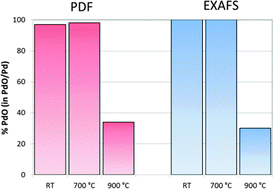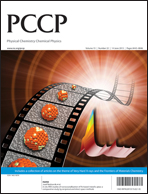Elucidation of structure and nature of the PdO–Pd transformation using in situ PDF and XAS techniques†
Abstract
The PdO–Pd phase transformation in a 4 wt% Pd/Al2O3

- This article is part of the themed collection: Hard X-rays and the Frontiers of Materials Chemistry

 Please wait while we load your content...
Please wait while we load your content...